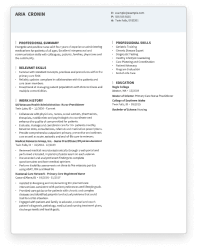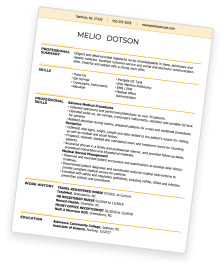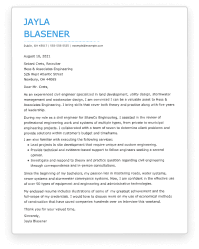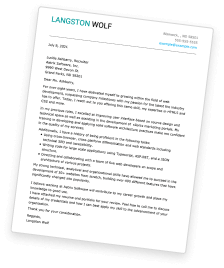Business Analyst Resume: Overview
As a business analyst, you play a crucial role in identifying and developing solutions to meet business needs.
From large corporations to startups, business analysts work in various industries, including:
- Finance
- Cybersecurity
- Marketing Firms
- Supply Chain Management
- Telecommunications
To succeed as a business analyst, you need key skills, including data analysis, statistical languages, SQL, problem-solving, communication, and project management.
Ready to take your business analyst career to the next level? Then let us help you build the best resume possible.
Explore our professional resume examples and downloadable templates to create a resume tailored to your unique skills and experience.
Start building your future today!
Business Analyst Resume: Choose a Format
Crafting a compelling business analyst resume starts with choosing a format that best suits your unique skills and experiences.
Each format—chronological, functional, and combination—offers distinct advantages (and potential drawbacks) and can be tailored to different career situations.
Let’s explore each option to help you determine the most effective format for your business analyst resume.
Chronological Resumes for Business Analysts
Chronological resumes present your work history in reverse chronological order, starting with your most recent position and working backward.
By showcasing your career journey in a clear timeline, chronological resumes allow employers to track your professional growth and accomplishments easily.
Business analysts with consistent work experience in business analytics may benefit from this format, as it emphasizes continuity and expertise in their domain.
Chronological resumes are also the most common format, which means they will be familiar to potential employers and very compatible with applicant tracking systems (ATS), which can increase your chances of having your resume seen by the right person!
Functional Resumes for Business Analysts
Functional resumes take a different approach by prioritizing skills and achievements over the traditional chronological work history.
This format offers flexibility and customization for business analysts seeking to highlight specific qualifications or who are just starting their careers.
By organizing your resume based on relevant skills and abilities rather than a detailed work history, functional resumes allow you to emphasize your strengths and suitability for the role.
This format works well for business analysts with diverse backgrounds or those transitioning between industries, enabling them to showcase their transferable skills effectively.
However, it is important to note that functional resumes are not very compatible with applicant tracking systems because most employers prefer receiving details about your previous work experience.
Combination Resumes for Business Analysts
As the name suggests, combination resumes combine elements of both chronological and functional formats.
This hybrid approach allows business analysts to showcase their chronological work history while also emphasizing relevant skills and achievements.
By blending the best of both worlds, combination resumes offer a comprehensive overview of your professional background while highlighting your key qualifications for the role.
This format can work well for business analysts with diverse job experience or those seeking to tailor their resumes to specific job requirements.
Whether you’re transitioning between industries or aiming to showcase a blend of technical expertise and leadership skills, a combination resume can effectively convey your value proposition to potential employers.
However, using this format can make your resume lengthy. Experts recommend your business analyst resume be one or two pages at most, so be aware of that when choosing a combination format.
Choosing a Resume Format
Choosing the right resume format depends on your unique career journey and the specific job you’re applying for.
While each format has its advantages, a chronological resume is generally safe for business analysts of all experience levels.
Its ATS-friendly structure allows for easy customization to suit any professional background.
Even if you don’t have relevant experience as a business analyst, you can tailor a chronological resume to showcase your most transferable skills.
Consider how your previous work has prepared you to be a business analyst. Skills like problem-solving, communication, and teamwork are needed in any career.
You can also add sections highlighting your education, relevant coursework, certifications and volunteer experience to showcase your ability to succeed as a business analyst.
Explore this guide to writing a resume for a business analyst to learn more about tailoring your resume to each job application!
How to Write a Business Analyst Resume
Once you decide on a resume format, you can start crafting your resume content.
There are five critical sections that outline a business analyst’s resume: ‘
- Contact Info
- Summary or Objective Statement
- Work History
- Skills
- Education
You can also opt to include additional sections, but make sure the information is relevant to the business analyst job description that you are applying for. Otherwise, you will use valuable space.
Each section is an opportunity to make a great first impression! Let’s explore how to make each section stand out from the competition.
Contact Information
First, you will provide your name and contact information.
Place this information prominently at the top of your resume, including your full name, city and state, professional email address, phone number, and (optionally) a LinkedIn profile.
The exact format for this information varies depending on which resume template you use, but the contact information on a business analyst resume will typically look something like this:
Joe Johnson
Cleveland, OH
jjohnson@fake.email.com
555-555-5555
Linkedin/in/jjohnson55
Remember to check your contact information carefully for typos to ensure potential employers can reach out to you!
Summary or Objective
Next, you will write a concise statement to introduce your resume.
When crafting your resume’s summary or objective, think of it as your elevator pitch—a brief but impactful introduction to who you are as a business analyst.
If you’re a seasoned professional, a professional summary is your chance to highlight your skills, experience and key accomplishments.
For example, a resume summary for a business analyst might say:
“Results-driven business analyst with over five years of experience in financial services. Proficient in data analysis, project management, and process improvement, with a proven track record of driving revenue growth and cost savings.”
On the other hand, if you’re new to the field or undergoing a career transition, an objective statement can convey your career aspirations and enthusiasm for the role.
For instance, an objective statement for someone just starting their career as a business analyst might say:
“Aspiring business analyst eager to apply strong analytical skills and business acumen in a dynamic corporate environment. Seeking opportunities to leverage my educational background in finance and internship experience to drive organizational success.”
Whichever option you choose, ensure it resonates with the job you’re applying for and showcases how your skills and aspirations align with the company’s needs.
Use keywords from the job description when appropriate to help your resume pass initial screenings by ATS and hiring managers.
Work History
Your work history section is where you showcase your professional journey as a business analyst.
Start with your most recent role and work backward to provide a clear timeline of your career progression.
Each job entry should include your job title, company name, and the dates of employment.
Then, under each job entry, write at least three bulleted sentences detailing your responsibilities and achievements for each role.
To make this section more compelling, use action verbs like “conducted,” “identified,” and “resulting” to add depth to your descriptions and demonstrate your proactive approach to the job.
Remember to quantify your accomplishments whenever possible to provide concrete evidence of your impact.
As a business analyst, using numbers and percentages will validate your ability to interpret and use data to help potential employers.
For example, instead of simply stating, “Responsible for data analysis,” you could say:
- Conducted comprehensive data analysis to identify market trends, resulting in a 10% increase in sales revenue within six months.
By describing your work experience and the results you achieved, you provide potential employers with a clear understanding of your past experiences and showcase your ability to deliver tangible results—a crucial aspect of being an effective business analyst.
An example of the work history section of a business analyst resume may look like this:
Senior Business Analyst
ABC Corporation, San Francisco, CA
March 2020 – Present
- Led a cross-functional team in developing and implementing a new analytics framework that streamlined data processing and analysis, reducing report generation time by 35%.
- Conducted comprehensive market research to identify emerging trends and opportunities, directly influencing the strategic planning process and contributing to a 20% year-over-year revenue growth.
- Implemented advanced data visualization tools to enhance reporting capabilities, facilitating more informed decision-making and increasing operational efficiency by 25%.
Note: Your work history section can also be tailored to each job you apply for. Read the job posting carefully, and mention relevant experiences that match the job requirements.
Again, use keywords from the job description when possible to help make your resume more ATS-friendly.
Skills
Next, you will create a dedicated skills section.
To showcase your full abilities as a business analyst, include technical skills, such as data analysis and software proficiency, and soft skills, such as communication and problem-solving.
Tailor your skills to match the job description, emphasizing those most relevant to the role.
We have compiled a list of the top five hard skills and soft skills for a business analyst resume to help you get started!
Top 5 Hard Skills for Business Analyst Resumes
- Data Analysis: As a business analyst, proficiency in data analysis is essential for making informed decisions and driving strategic initiatives. Utilizing statistical methods, you can interpret complex data sets, identify trends, and extract actionable insights to support business goals and improve processes.
- Requirement Gathering: Successful business analysis hinges on understanding and translating business needs into actionable requirements. By conducting thorough analyses, you can identify stakeholders’ requirements, document them accurately, and ensure that solutions effectively address organizational objectives.
- SQL Proficiency: SQL proficiency is an important computer skill that enables business analysts to retrieve and manipulate data from databases, facilitating in-depth analysis and reporting. By querying databases effectively, you can access valuable information, perform data validation, and generate meaningful insights to support decision-making processes.
- Project Management: Effective project management skills are vital for business analysts to coordinate cross-functional teams and ensure project success. By managing timelines, resources, and budgets, you can drive project deliverables, mitigate risks, and achieve objectives within scope and schedule.
- Business Process Modeling: Business process modeling allows business analysts to document current and future-state processes, identifying opportunities for optimization and improvement. By analyzing workflows, identifying bottlenecks, and proposing streamlined solutions, you can drive efficiency and enhance organizational performance.
Top 5 Soft Skills for Business Analyst Resumes
- Communication: Strong communication skills are crucial for business analysts to effectively convey technical information to stakeholders across all levels of the organization. By articulating complex concepts clearly and concisely, you can facilitate collaboration, garner support for initiatives, and drive alignment toward common goals.
- Problem-Solving: Business analysts must possess strong problem-solving skills to analyze complex issues and develop innovative solutions. By applying critical thinking and creativity, you can identify root causes, explore alternative approaches, and implement strategies to address business challenges and drive positive outcomes.
- Critical Thinking: Critical thinking is essential for business analysts to evaluate information objectively and identify trends, patterns, and opportunities for improvement. Analyzing data and evidence allows you to make informed decisions, anticipate potential risks, and recommend strategic actions to drive organizational success.
- Adaptability: In today’s fast-paced business environment, adaptability is key for business analysts to thrive and succeed. By embracing change, remaining flexible, and quickly adapting to evolving circumstances, you can effectively navigate challenges, seize opportunities, and drive innovation within the organization.
- Collaboration: Collaboration is essential for business analysts to work effectively with cross-functional teams and achieve project goals. By fostering a collaborative environment, sharing knowledge and expertise, and leveraging diverse perspectives, you can build consensus, drive alignment, and deliver successful outcomes for the organization.
You can format your skills section in various ways, depending on how much page space is available, your resume format and the template’s design.
A typical skills section for a business analyst’s resume may look something like this:
Skills
- Data Analysis
- Requirement Gathering
- SQL Proficiency
- Problem-Solving
- Critical Thinking
- Adaptability
However, if your work history section is lacking, you might provide more information about your skills by presenting them this way:
Skills
- Data Analysis: Proficient in utilizing statistical methods to interpret complex data sets and extract actionable insights.
- Data Visualization: Experience with data visualization tools such as Tableau and Power BI.
- SQL Proficiency: Strong command over SQL for querying databases to retrieve and manipulate data for reporting and analysis purposes.
- Communication: Excellent verbal and written communication skills, with the ability to convey technical information to stakeholders at all levels of the organization.
- Problem-Solving: Strong analytical and problem-solving skills, with the ability to analyze complex issues and develop innovative solutions to drive business objectives.
- Collaboration: Strong team player with experience collaborating with cross-functional teams to achieve project goals and drive organizational success.
Education
Most business analyst positions will require a minimum of a bachelor’s degree, while some positions will likely require a graduate degree or special concentration.
When listing your education on a business analyst resume, include your degree, major, institution, and the location.
List your highest level of education first, then only include previous degrees as space allows or if they are relevant to the position you are applying for.
An education section for a business analyst’s resume will typically look like this:
Bachelor of Science in Business Administration
University Name, Location
It’s unnecessary to include a graduation year, and some experts say including your graduation date may introduce bias into the hiring process. So consider that before adding a date to your education section.
Additional Sections
As we mentioned before, including additional sections can sometimes help highlight qualifications that make you stand out as a candidate.
If space allows, consider including sections such as:
- Certifications
- Professional Affiliations
- Publications
- Language Proficiency
- Awards or Honors
For example, a recent graduate might point out their most relevant coursework or special honors underneath their education section, like this:
Relevant Coursework
- Business Analytics
- Financial Analysis
- Data Management
- Project Management
- Strategic Planning
Honors & Awards
- Dean’s List
- Outstanding Business Student Award
Top Certifications For Business Analysts
Adding a certifications section to your resume can validate your abilities and demonstrate your expertise and dedication to business analysis, making you a more competitive candidate in the job market.
Consider pursuing certifications such as:
- CBAP (Certified Business Analysis Professional): This certification requires a minimum of 7,500 hours of business analyst work experience and 900 hours of work experience within four of the six BABOK knowledge areas, as well as completion of at least 35 hours of professional development.
- PMI-PBA (PMI Professional in Business Analysis): Designed for business analysts, this certification focuses on business analysis training through hands-on projects and testing on business analysis principles, tools and fundamentals.
- AAC (Agile Analysis Certification): This certification validates your ability to work in agile environments, which require adapting quickly to rapid change.
- Six Sigma Green Belt: Six Sigma is a set of methodologies used to improve business processes by reducing defects and errors, minimizing variations, and increasing quality and efficiency.
8 Tips For Writing A Business Analyst Resume
Tailor your resume to the job description: Review the job posting carefully and align your resume with the specific requirements of the role. Highlight relevant skills like data analysis, requirement gathering, and project management to demonstrate your fit for the position.
Quantify your achievements with measurable results: When describing your accomplishments, provide quantifiable metrics whenever possible. For example, mention how you improved efficiency by a certain percentage or contributed to cost savings within a specific timeframe to showcase your impact as a business analyst.
Highlight your analytical abilities: Showcase your analytical skills by describing successful projects where you utilized data-driven insights to solve business problems. Provide specific examples of how you identified trends, made recommendations, and implemented solutions to drive positive outcomes.
Use industry-specific keywords: Incorporate industry-specific keywords and phrases relevant to business analysis to ensure your resume gets noticed by applicant tracking systems (ATS) and hiring managers. Include terms like “business process modeling,” “data visualization,” and “stakeholder management” to demonstrate your expertise.
Keep your resume concise and focused: Business analysts often deal with complex information, but it’s important to keep your resume clear and concise. Aim to limit your resume to one page to ensure it’s easy to read and quickly highlights your qualifications and achievements.
Proofread carefully: Thoroughly review your resume for typos, grammatical errors, and formatting inconsistencies. Attention to detail is crucial for a business analyst role, so ensure your resume reflects your professionalism and accuracy.
Utilize a clean, organized layout: Opt for a clean and organized layout with clear headings and bullet points to enhance readability. Use formatting techniques like bolding and bullet points to make critical information stand out and seamlessly guide the reader through your resume. A visually appealing template can help you organize each section of your resume and help it stand out from the rest!
Seek feedback from peers or mentors: Before finalizing your resume, seek feedback from colleagues, mentors, or industry professionals. They can provide valuable insights and suggestions to ensure your resume effectively showcases your qualifications and stands out to potential employers.


Use Hloom's Resume Builder
Key Takeaways
- Crafting a standout business analyst resume requires thoroughly understanding the job description.\
- Choose the right resume format based on your unique career journey and relevant skills.
- Highlight your key skills and achievements, tailoring your resume to match the job description and demonstrate your suitability for the role.
- Including relevant certifications can enhance your credibility and competitiveness as a business analyst candidate.
- Proofread your resume to avoid embarrassing mistakes and demonstrate your attention to detail.
Use Hloom's Cover Letter Builder


FAQ
Citations
- Bureau of Labor Statistics. Management Analysts. Occupational Outlook Handbook. September 2023.
- Harvard Business Analytics Program. "Top Business Analytics Skills." Harvard Business Analytics Program. 2024
- Lian, T., & Zuke, J. 18 résumé writing tips to help you stand out. The Wall Street Journal. May 2021.














